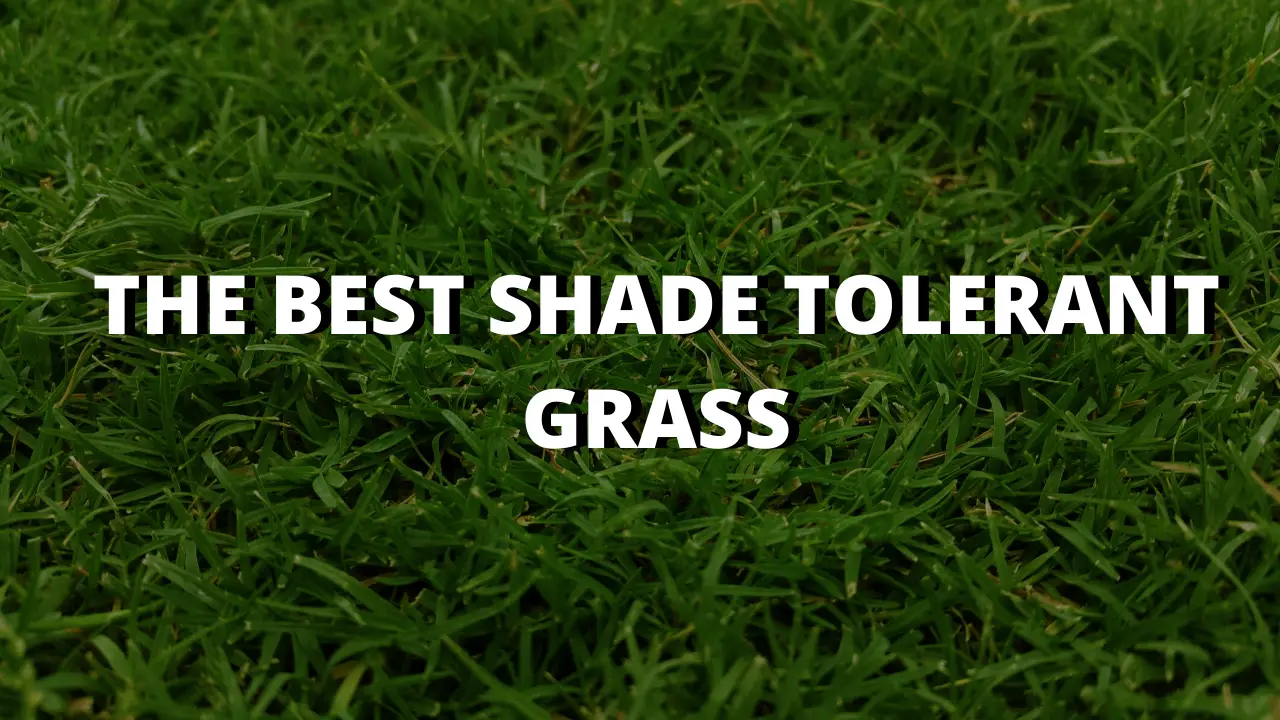The combination of shade and grass can present some challenging problems. These areas are often susceptible to bare spots, thinning, and immature growth. Changing the way shade hits your lawn isn’t always achievable due to other foliage and buildings that block the path of sunlight. The best way to tackle the effects of shading is to plant the best shade tolerant grass that can grow well in your climate. You can also follow some simple steps to encourage better growth in shady spots. A little care can go a long way to getting your lawn back in beautiful shape. Here’s the most popular shade-tolerant grass to choose from:
The best grasses to grow in the shade are St. Augustine Grass and Zoysia Grass for warm-season grass. Fescue Grass, Rye Grass, and Bluegrass are great cool-season grass for shade. Each has its own set of parameters for proper growth and you can mix these grass seeds to get a good balance between sun and shade.
Which Grasses Best Tolerate Full Shade
If you have the option to put in new grass, selecting the right kind can be helpful in several ways. You’ll save on the costs of having to replant or fertilize. You’ll also save time and energy by not having to follow many steps of routine care. This is not to say that the best shade tolerant grass doesn’t require some work and tending. However, you will notice that other grasses will take more resources to maintain. While there are many grasses that fair better with less sunlight, we’ve covered the top five in detail. However, there are a wide variety of grasses that do well in shade with minimal care.
While shopping for your new lawn, whether you choose grass see, hydroseed, or sod, it is important to select the proper species for your geographical region. Only four hours of dappled sunlight are required for many shade tolerant varieties.
Encouraging Grass Growth in Shade
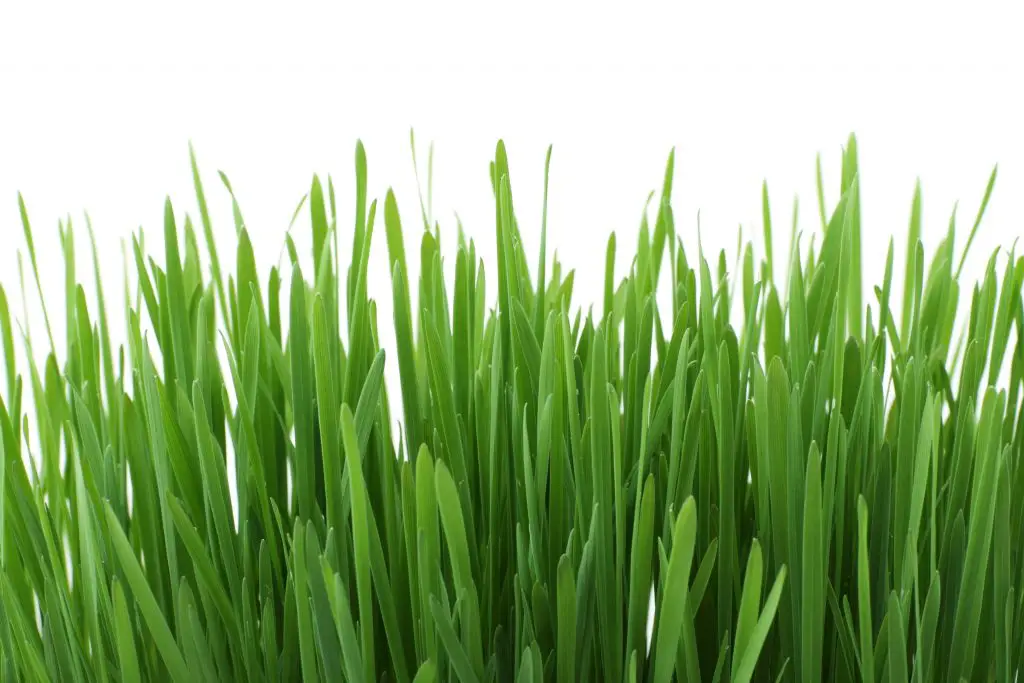
You look outside, and you notice some less attractive areas in your lawn. The suffering areas are located only in the shade. What can you do to remedy this situation? Is there an easy solution that won’t cost an arm and a leg? What remedies take the least amount of ongoing care to avoid future issues? With some time and care you can revive some areas if they haven’t completely died and prevent other areas from encountering less sunlight. The simplest solution is to provide more sunlight for your lawn by trimming back other foliage that blocks the light. Still, there are further methods you can implement.
Easy Methods to Increase Growth in Shade
- Decrease physical damages: by limiting walking in areas of shade and keeping pets out of this area, grasses are less likely to receive trauma. Trampling grasses in shaded areas reduce their surface area’s exposure to sunlight.
- Trim less: Be allowing grasses to grow taller in shaded areas, you increase the surface area that is exposed to sunlight. This allows the lawn to reach improved levels of photosynthesis. Increase the height of your mower blades to achieve this.
- Remedy diseases: Grasses that are shaded may remain damp for long periods. This leaves them exposed to fungal diseases. Watch for symptoms of the disease and treat according to their solutions immediately to prevent loss.
- Reseed: during the fall, you can seed or overseed heavily to prevent overgrowth of weeds. It is recommended that you cover shaded areas with 6-8 pounds per 1,000 square feet.
- Plant shade resistant grasses: when you reseed your lawn, you should use a grass that will be more tolerant of receiving less sunlight.
- Remove items causing shade: where you have the ability, you can move items that are causing shade. For example, a patio table may be causing shade in one spot. This could be remedied by moving the table to a different location. You can trim back shrubs and branches or even fully remove this foliage when possible.
Top 5 Shade Tolerant Kinds of Grass
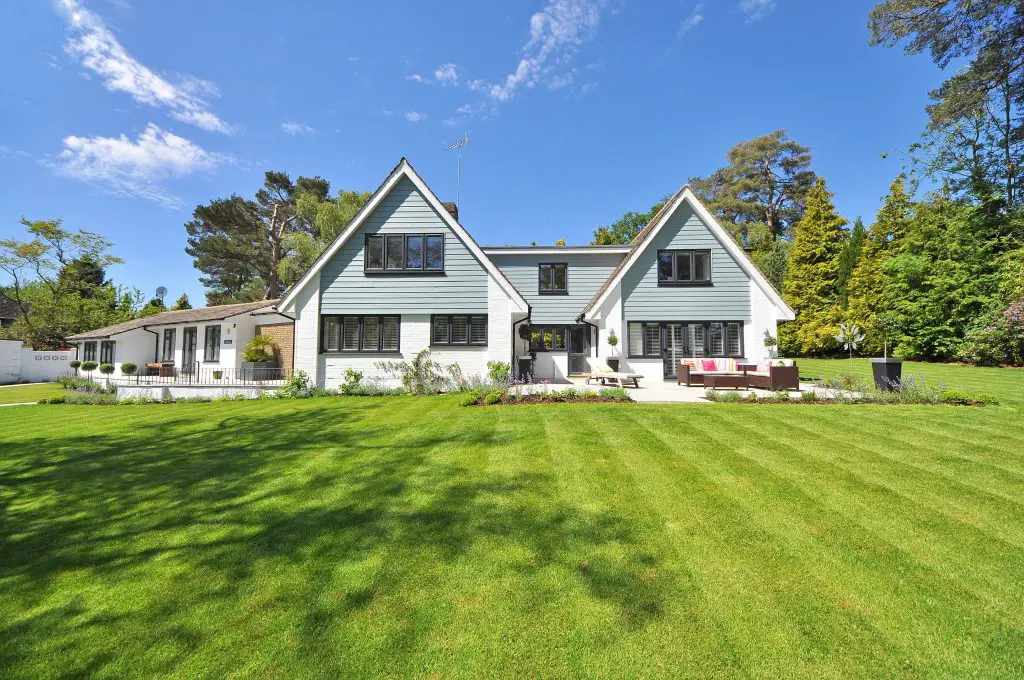
If you’ve decided to take on the option of repairing or reseeding your lawn, you might be wondering which species of grass to plant. You should always base your decision on what region you live in, as many grasses thrive better with different temperatures and humidity levels. You also need to understand the amount of sunlight required for grasses. For instance, if an area receives only a few hours of dappled sunlight per day, you wouldn’t want to choose a species that requires six hours of direct sunlight.
If you have less time to tend to your lawn, you should also consider selecting a species that requires fewer hands on maintenance. To make things easier, we’ve covered the top five shade tolerant grass species. Included is information regarding the areas these species thrive best in as well as some tips for best growing results.
St. Augustine Grass – Our Pick
St. Augustine Grass is also called Charleston grass. This grass does best in exceptionally well in shaded areas. It is a warm-season grass with minimal sunlight requirements. While other grasses still fair better in shade, this option is suitable for areas only receiving 4-5 hours of direct sunlight. Cultivators of St. Augustine grass include Sapphire, Bitter Blue, Palmetto, and Seville. There are eleven cultivators of this grass in total. Discover more about how St. Augustine Grass behaves in this article.
- Floratam cultivators require 6-8 hours of direct sunlight
- Other cultivators require 4-5 hours of direct sunlight
- Found most in the southern United States locations
- Trim canopy in above trees to increase sunlight
- Increase height of mower deck for shaded areas
- Reduce foot traffic through shaded areas
Zoysia Grass

Zoysia grass is originally from Asia but could be found in the US since around 1895. This species of grass still does best in areas that receive sunlight. It fares better than other grasses in low-light instances, but it is not completely shade resistant. Subtropical locations, like Florida, will provide the best climate and growing conditions. It is a warm-season grass with some cold tolerance, making it suitable for transition zones. This species of grass can also tolerate heat and drought. It is suitable for areas of high traffic and should continue to grow densely in these areas. Learn about all the different cultivators of Zoysia grass here.
- Requires 3-4 hours of direct sunlight
- Good for areas near tall buildings and trees
- Fine blade cultivators (like Zeon and Geo) provide highest shade tolerance
- Slow-growing cultivators (like Emerald) are susceptible to weeds
- Slow to establish
Fescue Grass
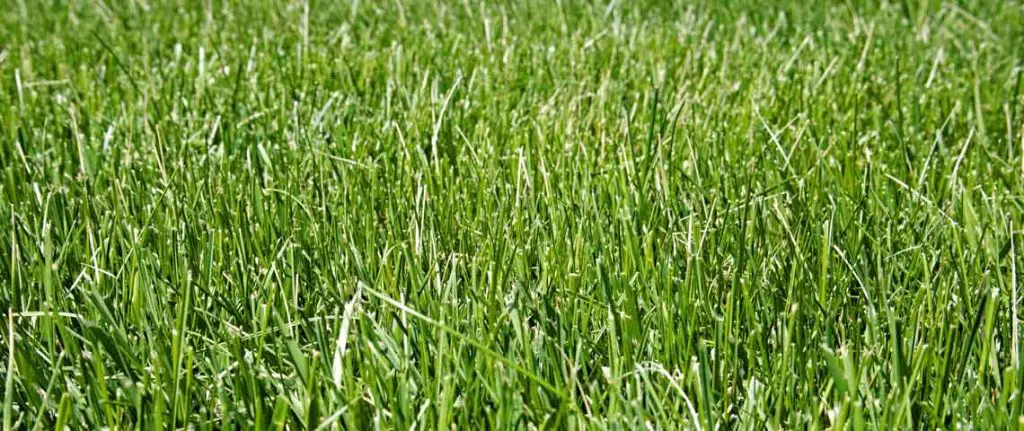
This European-originated grass species is a cool-season grass with improve heat tolerance. Fescue grass came to the US in the early 1800s. It grows well in northern and transition zones during the coolest months of spring and fall. It can grow in shade but does not fare well in heavily shaded areas with thick canopy or near tall buildings. Fescu grass can withstand some drought conditions and holds its own in regions of low fertility. It is also disease resistant. While full sun is best for its growth, fescue grass does have some resistance to shaded conditions. Find out why tall fescue has become popular in this quick overview.
- Requires 4-6 hours of sunlight that is filtered or dappled
- Does not grow well near tall trees with thick canopies or large buildings that block total sunlight
- Set mower blades higher, fertilize with nitrogen, and water adequately to encourage healthy growth
- Damaged areas will not repair themselves and need reseeding
- Cultivators include tall, red, fine, and Chewings
- Fine fescue cultivators are grown in central and north US
- Reseed when needed during cool spring and fall months
- Requires more watering during hot months to prevent damage
Rye Grass
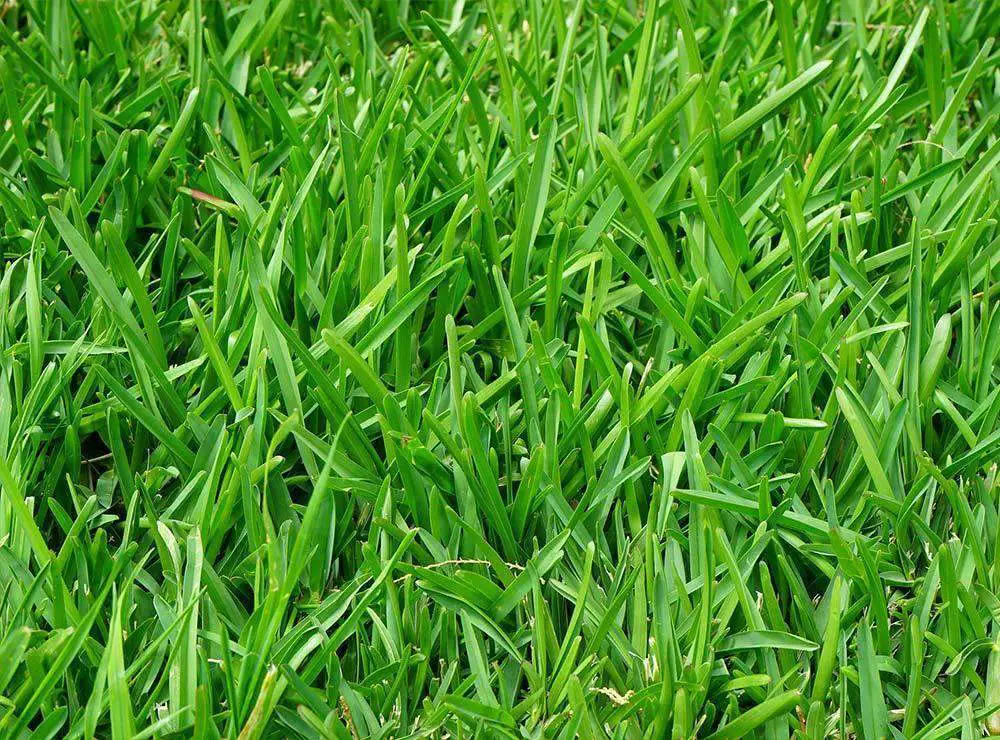
Though the name is similar, rye grass does not come from the rye plant that produces grains. It is native to Europe and Asia. Only some cultivators of rye grass grow well in areas of low sunlight. Still, the Perennial Ryegrass cultivator tolerates shade well. This cool-season turfgrass fares best in temperatures of 68-77 degrees Fahrenheit. This means that it often dies during the warmer summer months. However, it tends to keep its color well into winter. It is quick to germinate and establishes rapidly. There is a difference between annual rye grass and perennial rye grass. The annual variety is used for short-term purposes as its lifespan is short. Perennial kinds are used for turn as they come back year after year. Penn State’s guide teaches you how to properly manage rye grass in full.
- Requires 4-5 hours of direct sunlight for optimal growth
- Prefers direct sunlight, not filtered or dappled
- Perennial Ryegrass cultivator does well in shade
- Other cultivators of ryegrass do not tolerate shade well
- Plant in fall during cool temperature
- Set mowers to height of 1.5-2.5 inches
Kentucky Bluegrass

Even though its name would suggest it originated in Kentucky, bluegrass is from Europe and northern Asia like many other grasses. Bluegrass is a cool-season variety. As with Ryegrass, only certain cultivators of bluegrass will tolerate low levels of sunlight or direct shade. Rough bluegrass does best in shady areas that are wet and cool. This cultivator does not do well in warmer climates. During hot summer months, this grass is often scorched and dies. This leaves behind bare spots that will need to be reseeded. This is due to the shallower root system. Still, it survives well in areas with harsher winters. Some kinds are susceptible to damage in high traffic spots. With adequate care, bluegrass can come back with great health year after year. The University of California has detailed illustrations of the root system of bluegrass.
Quick info about Bluegrass
- Requires 4 hours of dappled sunlight each day
- Thrives in cool climate with moist ground
- Cultivators that do well in shade include rough bluegrass and Kentucky Bluegrass
- Reseed in early fall
- Dethatch ever one to two years
- Needs one inch of water per week during normal weather, and two inches per week during dry periods
- Set mowers decks to trim at 3 to 4 inches
- May require more fertilizer for optimal color
You see that while many grasses tolerate shade well, they each have their own requirements that must be followed for proper growth. The careful tending of your lawn according to these individual species’ needs will lead to optimal growth levels and vivid colors. This prevents bare spots and thinning as well as yellowing. In the long run, you will save time and money with following the proper steps in care. Planting a grass species that will survive your climate conditions and shade variations will also help you to keep ongoing care requirements to a minimum. You also need to consider the different cultivators in your chosen grass species.
Once you’ve chosen the grass species and cultivator that is right for your needs, you’ll want to make sure that you plant it according to the instructions. Ensure that you spread enough seed for your square footage coverage is necessary to prevent weed growth that can choke the grass seedlings before they come to maturity. Once grown, follow the steps needed to maintain your lawn’s longevity.
Best Shade Tolerant Grass Alternatives

There are some alternatives to growing turfgrass. Perhaps your lawn has dense shade that makes almost any species impossible to grow in certain spots. Up against buildings and along fence lines tend to be tricky for maintenance. Consider planting something else, like an ornamental grass, that still has a grassy green appearance rather than flowers or shrubs. These alternatives grow fast, quickly turning a dead spot in your lawn into a decorative feature.
Ornamental Alternatives
- Japanese forest grass – while some die back over winter months, these plants are considered semi-evergreen. There are a variety of colors to choose from to compliment your existing lawn. These grasses grow to 18-24 inches in height with sweeping blades.
- Blue gama grass – this plant is native to North America. It grows roughly to 2 feet in height. It is a perennial that will regrow every year and is drought tolerant, making it a great substitute for turfgrass.
- Korean feather reed grass – this ornamental grass reaches heights of 3 to 4 feet at full maturity. It is also known as foxtail grass for its bushy appearance.
- Autumn moor grass – this grass is considered semi-evergreen or evergreen depending on your climate. It grows to heights of 1 to 2 feet at full maturity.
- Fall blooming reed grass – this grass blooms from august to October depending on your region. It grows to heights of 1.5-3 feet tall.
- Liriope – also called lilyturf or monkey grass resembles regular turfgrasses with a flowering formation like grape hyacinth. It grows to read up to 18 inches in height.
- Little miss maiden grass – reaching heights of 2 to 3 feet tall, this ornamental grass comes from Asia. It features a reddish-purple color.
Get Started on Your New Lawn Today
If you’re experiencing problems with your lawn due to shade, there are many different remedies to choose from. Assess your lawn’s needs carefully to discover which type of grass might be best for planting. Include considerations for your time to care for future maintenance when selecting the species of grass to plant. The best shade tolerant grass will a different outcome depending on where you live and the sources of shade on your property. You may be able to get away with simply trimming back the trees and bushes causing the areas of concern. Still, you may have to reseed with a new species of turf. If you lack the time to provide adequate maintenance, it may be better to consider an ornamental alternative to turfgrass altogether.

